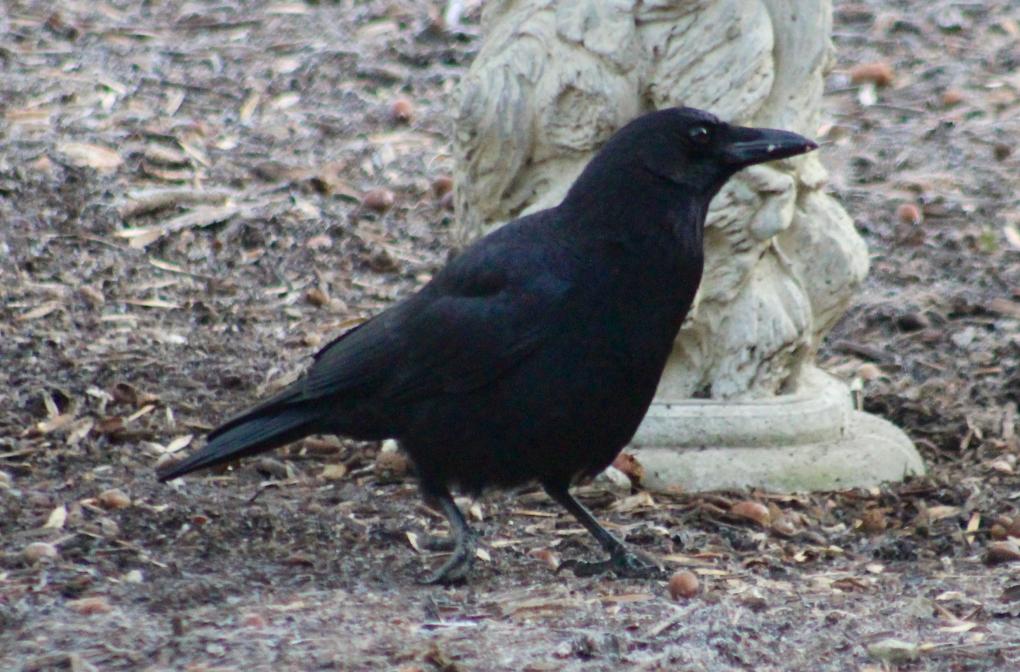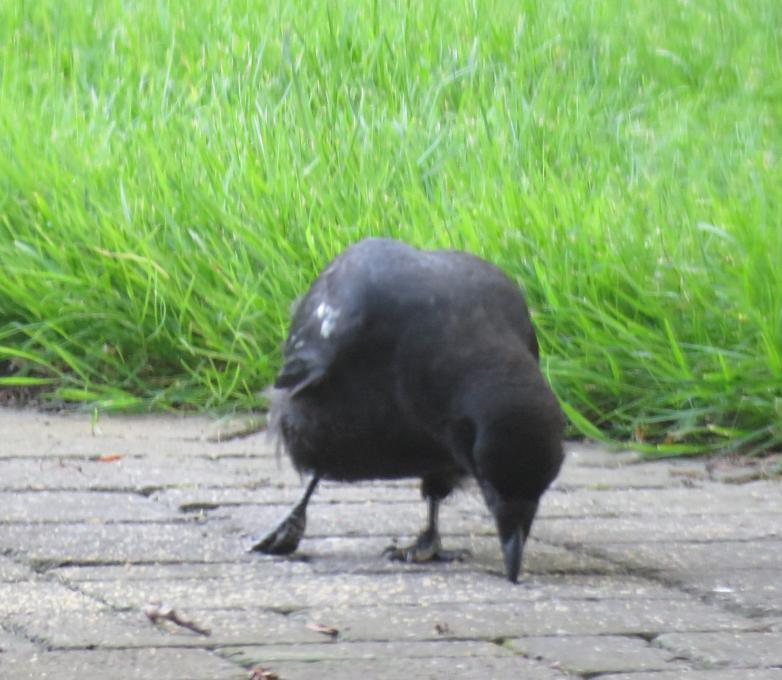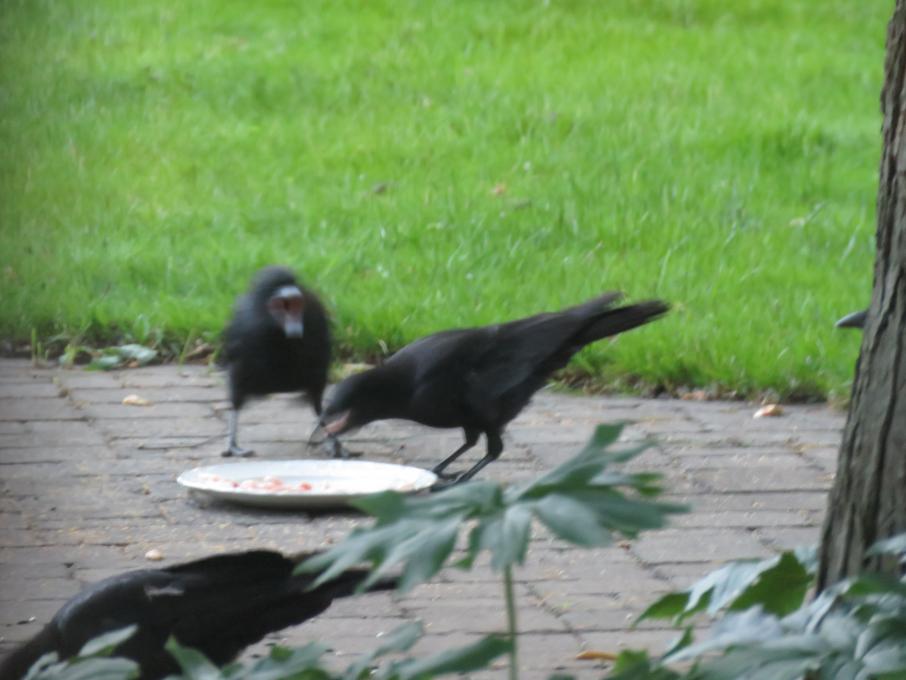The Cornell Lab Bird Academy › Discussion Groups › Anything but Common: The Hidden Life of the American Crow › A Real Murder of Crows
-
It seems like these crows don't admit de-feet easily!
-
1. I live in a rural area, Mathews County, VA. I have been observing a crow family on my 40 acre farm since 1998. The family has always appeared healthy. Averaging 7-9 crows per year. I have not observed any dead or sick on my property. 3. I have not seen any aggression in this family. Only in winter, when a large flock will fly over, but even then, the locals seem to accept the invaders. Actually, this year, 2021, I observed a second group nesting in my area, close by. About .75miles from the first family's nest. I can't be sure, but this appears to be budding (something I just learned from this course). This is a smaller group, consisting of 2-3 individuals, but closer to the main house. I have observed no aggression between these two groups.
-
I have never seen an unhealthy crow in my area, nor seen any impact of West Nile Virus. In general, the crows in my neighborhood seem to be quite friendly with one another, "talking" back and forth and flying around the street.
-
1. I remember a few years ago, there was a crow that seemed "different" than the others, i.e: not as healthy. My memory is somewhat spotty, but I believe he had some issue with walking. He could have been a crow with a missing foot, but I can't verify that. I do wonder, though, has any crow ever lost both feet? It seems odd that all instances show these crows with only one injured foot, but might there be some instances where a crow actually has an injury to both feet, and what are the consequences? To my knowledge, I do not know whether West Nile Virus had a significant impact on the crow population where I live. I find it interesting that crows can actually attack other crows or other birds. I thought their bill wasn't the right "equipment" for doing such damage as they are primarily scavengers and clean up other animals' messes. They let others do the "killing" for them, or so I thought. 2. The crows that live behind my house (there are about eight or so of them that always seem to be together) seem to be mostly cooperative with each other. They band together when there's an offending hawk or fox nearby and go after that predator. I've not seen any attack other crows, but I'll be more on the lookout now!
-
1. The Crows I've seen around my property seem healthy, although I haven't seen them for awhile. 2. There were three Crows that used to come around. There was never any that I noticed, seemed like they were friends just hangin' out.

 We did have a Raven stop by last summer. That was a treat since it was the first one I had seen here in Connecticut.
We did have a Raven stop by last summer. That was a treat since it was the first one I had seen here in Connecticut. -
Marvelous pics, Bill.
-
Nice pic. Thanks to this class I can identify by those lovely long neck feathers:-)
-
-
1. From the little I've seen of the local crows, they do appear healthy. I haven't seen any evidence of foot disease, and I have no knowledge about the impact of West Nile. Over the years I've been birding, I have seen several gulls with a missing leg and they seem to have no trouble getting food or getting around on the ground (they hop). I can't speak to how successful (nor not) gulls missing a leg might be. 2. The crows that I've seen have been generally cooperative, but I haven't paid as much attention to them during the breeding season as I do to other songbirds (the ones at my feeders, which does not include crows).
-
2. Most of the crows I have seen are generally cooperating together, and can sometimes be aggressive towards other species. I think on a few occasions I have seen acts of aggression between crows but cannot think of any specific examples at the time.
-
`1. Crows have just recently made a regular appearance to my home - so i am not sure about West Nile Virus impact on the area or perhaps the lacking of crows was a result of that? I do not have a reference point - except that crows are now regular visitors to my home when a few years ago they were not..though i have seen crows over the years on other nearby points on the lake our home is located. 2. The crows i have come to know seem healthy and well, i will be looking out for any aggression - i have never seen infighting.
-
I've only seen cooperative behaviors, except for some deference about who takes food first. I thought one crow had a broken beak -- the lower half drooped and it disappeared in the winter. But its impressive that when a hawk is around, especially in nesting season, out little bouquet call up allies and about 30 arrive very fast to mob the hawk, including dive-bombing it.
-
As a point, I read the "caution" about the video and chose not to watch it. Reading the description was difficult enough. I have a very active imagination so decided to forgo the video. I don't want to see "Crows" as anything but "interesting, intelligent" birds. I'm glad you put the "caution" there. I've never seen any Crow who looked like it was anything but a healthy Crow in my local area. I've also not seen any aggression between the Crows in my area. That was a very disturbing story, both about losing the foot and the "murder" of Crow on Crow. The one more positive note was that the Crows who lost a foot were able to survive and move on with their life.
-
I thought this section was very interesting and maybe... MAYBE why they inherited the hated name for a group of crows ...could it be , that this behavior was witnessed by Europeans hundreds of years ago and hence the namesake? Unfortunate , yes...Do we know all the reasons or if a crow actually did this since it was not witnessed ? No :) Although I would suspect ,that if crows are smart enough to figure out ways to eat food when they are hungry, they would be just smart enough to know how to ‘off’ one who was in the way( whatever way that was).
-
The crows I’ve seen in my. backyard and the meadow behind it, in the Coconino National Forest, have sat on the roof top, on trees and on the fence watching younger birds eat.
-
About 10 years ago we had a crow with one leg coming to our yard along with a family of crows. Don't know if West Nile Virus played a role in this, or not. West Nile did not have a large presence in Mid Coast Maine that I know of. We called this crow Peg. Peg survived until about Mid Winter and then disappeared. I've observed a lot of territorial defense and skirmishing among the crows in our neighborhood, but this has always resulted in successful defense of territory with intruders backing down and leaving. The most aggressive and surprising behavior I've seen is when, one spring, a crow swooped down onto a young Grey Squirrel driving its feet into the squirrel's back, then very quickly and violently driving its beak into the back of he squirrel's head and killing it. It then proceeded to eat the squirrel.
-
I found this to be an interesting lesson. I continue to be amazed at how the lives of crows mirrors that of humans (and vice versa). As the mother of a son with special needs, I am delighted that the crows Ho lose their feet are able to be an active part of their community rather than shunned. Dr McGown has mentioned the West Nile Virus several times; I would like to hear more about it and its effects on the crow population as well.
-
We have a family of crows, parents and three young, who live in our area and enjoy visiting the corn we put on the ground under the feeders. They look healthy and are enjoyable to watch. Haven't seen any aggression among them.
-
This was horrible. I could have done without this. Don't include things like this anymore. I would not want to pay for this horror ever again.
-
Hello Brenda, Thanks for the feedback. We know that the scientific details about what happened in this lesson topic bother some folks so we included a warning of before the video starts that one can skip that video if they are sensitive to a topic like this. For scientists, animal behaviorists, and future and current ornithologists this is an important part of crow biology and we need to study all aspects of biology when we are aiming to understand and help conserve ecosystems and understand social dynamics of birds. Our courses typically include a warning before anything that might be disturbing or sensitive. Feel free to skip those sections.
-
-
I do not often have crows come to my yard, but last year, in the late summer, a group of 3 showed up, I believe it must have been a mother, father and child, as they hung around our compost heap and were feeding the (very large) younger bird from it. It was very interesting to me, as I had never witnessed crow family behavior like this. Most of the time when I see crows, they are either flying in a large flock overhead, or I will see a few at a time, hanging out in the trees in the neighborhood, often on trash pickup day, seemingly talking to each other, and perhaps foraging for food.
-
1. Yes, crows are in my area. I live in North Georgia. I have not spent much time observing crows. Growing up in the South I was always told they were a nuisance. But I will be observing them more now and enjoying learning more about them.
-
I've added (below) 3 photos of crows I've been watching for years; the first, taken in 2016 shows "Gimpy" a female crow I had been watching for several years before this photo. I started putting out a morning treat of suet (or leftover protein) to my crows & Gimpy was always able to raise a brood of at least 2 babies. She had cleverly discovered that she could cling to a suet feeder & flap her wings while grabbing a mouthful - then getting water from the bird bath - she had a perfect slurry for her chicks. Second photo shows Gimpy in 2018 - white feather on right wing. Foot about the same. She and her mate lost their territory while we were on vacation so I don't know what happened to her. However, her adult male son inherited the territory & had a chick with the same foot problem (although more severe). The chick disappeared after about 4 months - I'm assuming a victim of predation - he actually had difficulty walking with the deformed foot. I do not have a photo of him. This year (2020) the same pair, occupying our territory (they share it with another crow family since the eating is so good) raised only one chick - he is shown in the photo, taken this year, in June - gaping & screaming for food ... Present crow grouping as of September of 2020 is 9 (4 from one family & 5 from the other). Enjoyed the information about the staph infection - did not know about this & I'm wondering if this is the problem ...
-
You are lucky to be able to see these crows up close and personal, but I think her name should be “Scrappy” instead of “Gimpy” - she’s a survivor!
-
-



-
1. The Crows in Montauk appear healthy. However been seeing less off them this year. Two noisy players must be clarifying turf. 2. In SF, the morning after the roost, there was a dead crow on the street. I did not see how it was killed, but it was pretty much in tack.
-
1.No, but I think I saw a song sparrow wit a missing foot, other than that no, I haven't seen any sick birds. 2. Generally I have not seen any aggression except for some playful chasing.
-
Several crows have been coming to our upstairs deck next to the kitchen for about 3 years and calling loudly until we throw out scraps for them. One has an deformed right foot. The foot is bent at the ankle and points backwards. Of the three crows that come it is the tamest and also the most aggressive when it comes to getting to the food.
-
In the Northwest corner of NJ... 1. The family of crows in my yard do not have the foot disease. One of the family members has a missing tail feather or two. I have no idea what happened or when, but I don't remember that last year and I believe it's the same family. 2. I have not noticed any specific aggression outside the normal play and vying for bits of food.
-
I live in central NJ, and for as long as I can recall, there are usually two crows around that look healthy. There are no signs of aggression between them. They never seem to be far apart.
Read More:
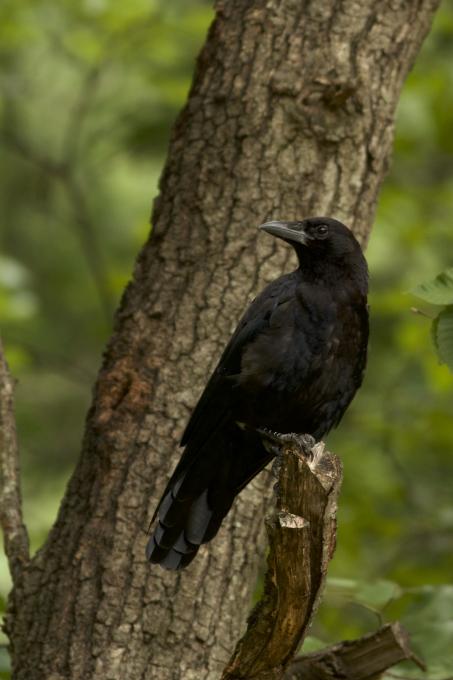
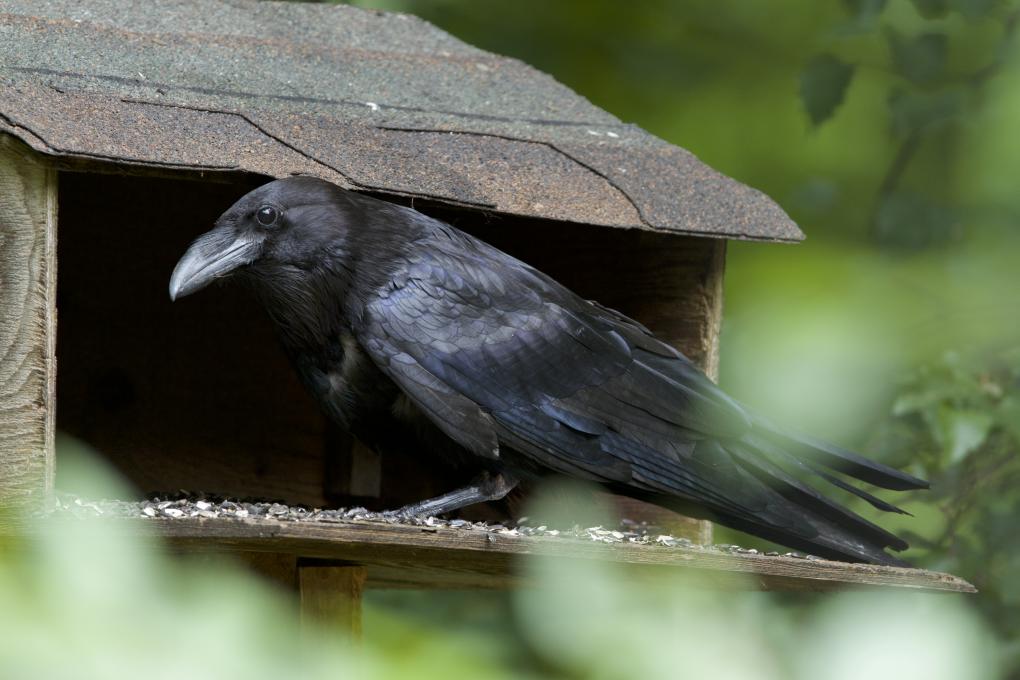 We did have a Raven stop by last summer. That was a treat since it was the first one I had seen here in Connecticut.
We did have a Raven stop by last summer. That was a treat since it was the first one I had seen here in Connecticut. 